Choosing the right dog clothes size ensures comfort, proper fit, and functionality. This guide helps pet owners understand measurements, fabric types, and sizing variations across brands for optimal fit.
Why Dog Clothing Sizes Matter
Properly fitting dog clothes are essential for your pet’s health, comfort, and mobility. Ill-fitting garments can cause skin irritation, restrict movement, or even lead to health issues like overheating. Clothes that are too tight may impede breathing, while loose clothing can get caught on objects, posing a safety risk. Correct sizing ensures your dog’s clothing serves its intended purpose, whether it’s for weather protection, style, or therapeutic support. Accurate fit also prevents damage to the clothing itself, making it last longer. Understanding the importance of sizing helps you make informed decisions for your dog’s well-being and comfort.
Benefits of Proper Fit
A proper fit ensures your dog’s clothing maximizes comfort, mobility, and functionality. Well-fitting clothes prevent chafing, skin irritation, and overheating, promoting overall well-being. They allow for a full range of motion, making activities like walking or playing more enjoyable. Properly sized clothes also stay in place, reducing the risk of accidents caused by loose fabric catching on objects. Additionally, a good fit extends the lifespan of the garment by preventing stretching or damage. Whether for style, weather protection, or therapeutic needs, the right size ensures your dog’s clothing serves its purpose effectively and comfortably.

Measuring Your Dog for Clothes
Accurate measurements ensure the best fit. Use a flexible tape measure to record your dog’s chest, neck, and length, keeping the tape level and snug but not tight.
Tools Needed for Accurate Measurement
To measure your dog accurately, you’ll need a flexible tape measure, ensuring it’s not too tight or loose. A non-slip surface and treats can help keep your dog still. Use a helper if needed to hold your dog steady. Ensure the tape measure is level and snug for precise chest, neck, and length measurements. Record the measurements carefully to match them with size charts. Avoid using a rigid ruler, as it won’t conform to your dog’s shape. Proper tools and technique ensure the best fit for your dog’s clothing, making the process efficient and stress-free for both you and your pet.
Step-by-Step Measurement Guide
Measure your dog’s chest girth by wrapping a flexible tape measure behind the front legs and around the widest part of the ribcage. Ensure the tape is snug but not tight. Next, measure the neck circumference at the base where a collar would sit. For length, measure from the base of the neck to the base of the tail. Note your dog’s weight, as size charts often include this. Position your dog calmly and avoid pulling the tape too tight or loose for accurate results. Record all measurements carefully to match with size charts for the best fit.
Understanding Weight and Body Type Considerations
Weight and body type play crucial roles in selecting dog clothes. While measurements are primary, weight helps estimate size, especially for stocky or muscular dogs. Dogs with broader chests or longer torsos may need larger sizes; Petite breeds might require smaller fits. Consider your dog’s muscle tone and fat distribution, as these can affect how clothes fit. Consider the dog’s activity level and how clothes will move with them. Combining weight with body type observations ensures a more accurate fit, avoiding sizing issues. Always refer to size charts but adjust based on your dog’s unique physique for optimal comfort and functionality.
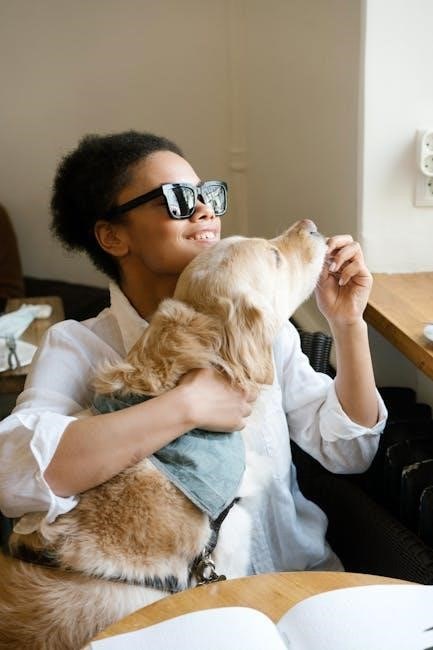
Dog Clothing Size Charts
Dog clothing size charts provide standardized measurements to help owners choose the perfect fit. They typically include dimensions for length, chest, and neck, ensuring accuracy and consistency across brands.
Standard Size Charts for Dogs
Standard size charts for dogs provide a consistent reference for measuring and selecting clothing. They typically include measurements for chest, length, and neck circumference, ensuring a universal fit. These charts often categorize sizes from Extra Small to Extra Large, with specific inch or centimeter ranges for each. By aligning your dog’s measurements with the chart, you can determine the best fit. While slight variations exist between brands, standard charts offer a reliable starting point. Always consider your dog’s weight and body type to refine the fit further. Accurate measurements ensure comfort, functionality, and a stylish appearance for your pet.
How to Read and Interpret Size Charts
Understanding size charts is essential for selecting the right fit for your dog. Start by locating your dog’s measurements, such as chest, length, and neck circumference, and align them with the chart. Pay attention to size categories (e.g., XS to XL) and corresponding inch or centimeter ranges. Ensure the chart matches your dog’s body type, as some brands cater to specific builds. If your dog’s measurements fall between sizes, consider the activity level and desired fit—relaxed or snug. Always check the chart’s units (inches or centimeters) to avoid errors. Accurate interpretation ensures comfort, proper fit, and optimal functionality.
Size Charts for Different Breeds
Different dog breeds have unique body types, requiring tailored size charts. For example, Bulldogs and Pugs may need shorter, broader fits, while Dachshunds require longer, narrower options. Breeds like Greyhounds or Whippets have athletic builds, needing leaner designs. Charts often categorize by chest circumference, back length, and neck size, ensuring proper fit for each breed. Always refer to breed-specific guidelines, as standard charts may not account for extreme body types. This ensures comfort, prevents restrictive clothing, and accommodates natural movement. By using breed-specific size charts, owners can select clothes that align with their dog’s unique proportions for optimal comfort and functionality.
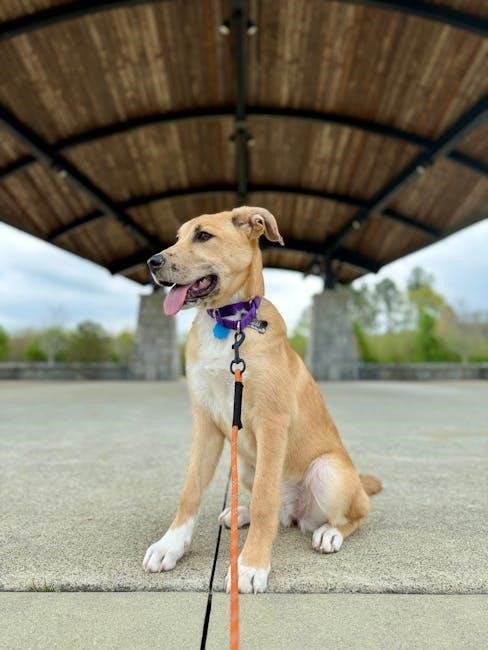
Fabric and Fit Considerations
Choosing the right fabric ensures comfort and durability, while proper fit guarantees unrestricted mobility and prevents discomfort. Key considerations include breathability, flexibility, and suitability for your dog’s lifestyle.
Choosing the Right Fabric for Comfort
Selecting the appropriate fabric for your dog’s clothes is crucial for their comfort and well-being. Natural fibers like cotton and bamboo are breathable, soft, and ideal for sensitive skin. Synthetic fabrics, such as polyester blends, offer durability and moisture-wicking properties, perfect for active dogs. Fleece and wool are great for colder climates, providing warmth without irritation. Consider your dog’s activity level, climate, and skin sensitivity when choosing fabrics. Lightweight, hypoallergenic materials are best for dogs prone to skin issues. Always prioritize fabrics that balance comfort, functionality, and your dog’s specific needs for optimal comfort and health.
How to Ensure the Best Fit for Your Dog
Ensuring the best fit for your dog involves accurate measurements and careful selection. Use a flexible tape measure to determine your dog’s chest, neck, and length. Compare these measurements to the size chart, allowing room for comfort. Consider factors like padding, adjustable straps, or stretchy fabrics for a snug yet comfortable fit. Always try clothes on your dog before finalizing, checking for ease of movement and no constriction. A proper fit ensures your dog’s comfort and full range of motion. Start with smaller sizes for puppies and consult brand-specific charts for the most accurate results.
Impact of Activity Level on Clothing Size
Your dog’s activity level significantly influences clothing size and comfort. Active dogs require breathable, moisture-wicking fabrics to prevent overheating. For high-energy breeds, ensure clothes allow a full range of motion, avoiding tight fits that could restrict movement. If your dog enjoys outdoor activities like hiking or running, opt for durable, lightweight materials. Conversely, less active dogs may prefer softer, cozy fabrics for lounging. Always consider your dog’s lifestyle when selecting clothes, as improper sizing or restrictive fabrics can hinder performance and comfort. Adjust sizing based on activity needs to ensure optimal fit and functionality.
Clothing for Different Activities and Seasons
Discover how dog clothing adapts to seasonal changes and various activities, ensuring comfort and protection. From winter coats to summer vests, each season and activity has tailored options.
Seasonal Clothing: Winter, Spring, Summer, Fall
Dog clothing varies by season to meet specific needs. Winter clothes include thick coats, sweaters, and waterproof jackets for cold and snowy conditions. Spring apparel focuses on lightweight, breathable fabrics like cotton or fleece, perfect for mild weather. Summer clothing prioritizes cooling comfort with mesh fabrics and UV protection to prevent overheating. Fall outfits often feature cozy sweaters and windproof vests. Each season requires materials and designs tailored to temperature and activity levels, ensuring your dog stays comfortable and protected year-round. Proper fit and fabric choice are crucial for optimal performance in varying weather conditions.
Clothing for Specific Activities
Dog clothing is tailored for various activities, ensuring functionality and comfort. Hiking jackets are durable and water-resistant, while swimming suits prioritize quick drying. Running vests and bike jerseys focus on breathability and visibility. For colder adventures, insulated coats and thermally-lined sweaters are ideal. Reflective strips enhance visibility during evening walks or runs. Activity-specific designs often include adjustable features for a secure fit. Proper sizing ensures freedom of movement, preventing discomfort or restriction. Always measure your dog accurately and consult brand-specific charts for the best fit, especially for performance-oriented clothing. This ensures your dog stays comfortable and safe during any activity.
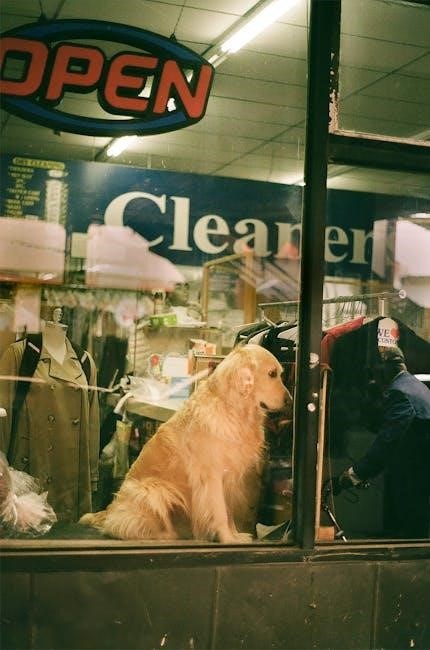
Brand-Specific Size Guides
Each brand offers unique sizing charts tailored to their designs, ensuring accurate fits. Always check the specific guide for precise measurements and style variations to avoid sizing errors.
Popular Dog Clothing Brands and Their Sizing
Well-known brands like WeatherBeeta, Ruffwear, and Puppia offer detailed size charts to ensure the best fit for dogs. Each brand tailors its sizing to specific breeds or activities, so consulting their guides is essential. WeatherBeeta often includes adjustable features, while Ruffwear focuses on durability for active dogs. Puppia emphasizes style and comfort with precise measurements. Checking brand-specific charts helps avoid sizing errors, as standards may vary. Always look for features like adjustable Velcro or customizable fits to ensure your dog’s comfort and mobility. Proper sizing ensures functionality, whether for outdoor adventures or everyday wear.
Importance of Checking Brand-Specific Charts
Each dog clothing brand has unique sizing standards, making it crucial to consult brand-specific charts. Sizes can vary significantly between brands due to differences in design, fabric, and intended use. For example, a medium in one brand might fit like a small in another. Checking these charts ensures accurate measurements, preventing issues like tight clothes that restrict movement or loose fits that compromise functionality. Proper fit enhances comfort, durability, and your dog’s overall experience. Always verify the brand’s sizing guide to avoid costly returns and ensure the best possible fit for your dog’s specific needs and body type.
Comparing Sizes Across Different Brands
Comparing sizes across different brands is essential due to varying sizing standards. While one brand’s medium may fit your dog perfectly, another brand’s medium could be too tight or too loose. Differences in design, fabric, and cut mean that sizes are not universal. To ensure the best fit, always refer to each brand’s specific size chart and measure your dog accurately. Even if your dog typically wears a certain size, double-checking with the brand’s guide can prevent sizing mismatches. This step is crucial for ensuring comfort, proper mobility, and the intended functionality of the clothing.
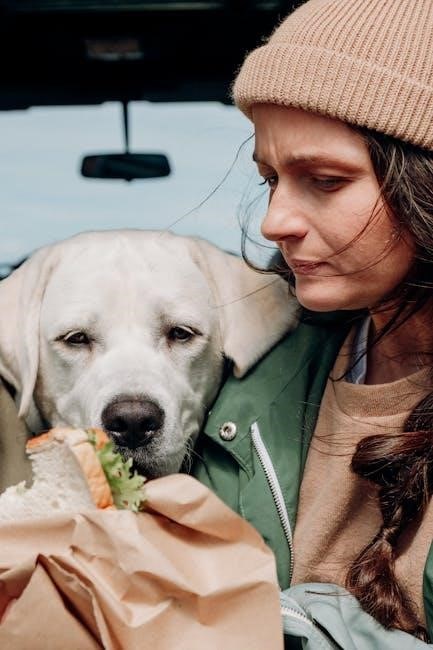
Accessories and Additional Clothing Items
Accessories like harnesses, collars, coats, and booties require precise sizing. Each item has specific fit needs to ensure functionality and comfort, styled to match your dog’s wardrobe seamlessly.
Sizing for Accessories Like Harnesses and Collars
Accurate sizing for dog accessories like harnesses and collars is crucial for comfort and safety. Measure your dog’s neck circumference for collars, ensuring a snug yet comfortable fit. For harnesses, measure the chest and girth to ensure proper distribution of weight. Use a flexible tape measure and consider your dog’s activity level, as active dogs may need more durable materials. Check brand-specific size charts, as sizing can vary. Avoid relying solely on weight, as body type and muscle structure play a significant role. Proper fit prevents chafing and ensures your dog can move freely and comfortably during walks or playtime.
Coats, Sweaters, and Other Clothing Items
When selecting coats, sweaters, or other clothing for your dog, precise sizing is essential for comfort and mobility. Measure your dog’s chest, neck, and length to ensure a proper fit. Consider the fabric’s breathability and durability, as these factors impact comfort during activities. Coats and sweaters should allow for a full range of motion without restricting movement. Check brand-specific size charts, as sizing can vary significantly. If your dog is between sizes, opt for the larger one to avoid tightness. Properly fitted clothing prevents chafing and ensures your dog stays comfortable and happy, whether lounging or exploring outdoors.
Care and Maintenance of Dog Clothes
Regular washing with mild detergent and gentle cycles preserves fabric quality. Avoid harsh chemicals and fabric softeners. Air-dry clothes to prevent shrinkage and maintain shape effectively.
Washing and Drying Tips
For dog clothes, use a mild detergent and gentle wash cycles to prevent fabric damage. Avoid harsh chemicals or fabric softeners, as they may irritate your dog’s skin. Always check the care label for specific instructions, as some materials require hand washing. Gently remove dirt or stains before washing to ensure a thorough clean. When drying, air-dry clothes instead of using a dryer to prevent shrinkage and maintain shape. Reshape garments while damp to retain their original form. Avoid leaving clothes in direct sunlight to prevent fading; Store clean clothes in a cool, dry place to keep them fresh for your dog.
Storing Dog Clothes Properly
Store dog clothes in a cool, dry place to maintain their quality. Use breathable containers like fabric bins or cardboard boxes to prevent moisture buildup. Avoid airtight plastic containers, as they can trap odors and mildew. Ensure clothes are clean and completely dry before storage to prevent stains and odors. Fold or hang items neatly to avoid wrinkles and creases. Organize clothes by size or type for easy access. Keep seasonal items separate to reduce clutter. Avoid storing in direct sunlight, as it may cause fading. Label containers for quick identification. Check stored clothes periodically for signs of damage or pests.
Buying Guide for Dog Clothes
Consider material quality, comfort, and durability. Choose styles that suit your dog’s lifestyle. Ensure proper fit by measuring accurately. Check reviews for insights and sizing accuracy.
Factors to Consider When Purchasing
When buying dog clothes, prioritize proper fit, fabric comfort, and durability. Consider your dog’s lifestyle, activity level, and seasonal needs. Choose breathable, moisture-wicking fabrics for active dogs. Opt for waterproof materials if your dog spends time outdoors. Ensure the clothing allows for a full range of motion. Check for adjustable features like Velcro straps for a secure fit. Review size charts and read customer feedback to avoid sizing errors. Consider eco-friendly or hypoallergenic options for sensitive skin. Lastly, ensure the clothing aligns with your dog’s personality and your personal style preferences.
How to Choose the Right Style and Design
Choosing the right style and design for your dog’s clothes involves considering their lifestyle and your personal preferences. Opt for breathable fabrics like cotton or mesh for everyday comfort. For active dogs, select durable, moisture-wicking materials. Reflective strips enhance visibility during walks. Consider hypoallergenic fabrics if your dog has sensitive skin. Adjustable features like Velcro straps ensure a secure fit. Choose designs that align with your dog’s personality, such as bold patterns for energetic dogs or subtle tones for quieter ones. Seasonal styles, like lightweight summer dresses or cozy winter sweaters, add practicality and charm.
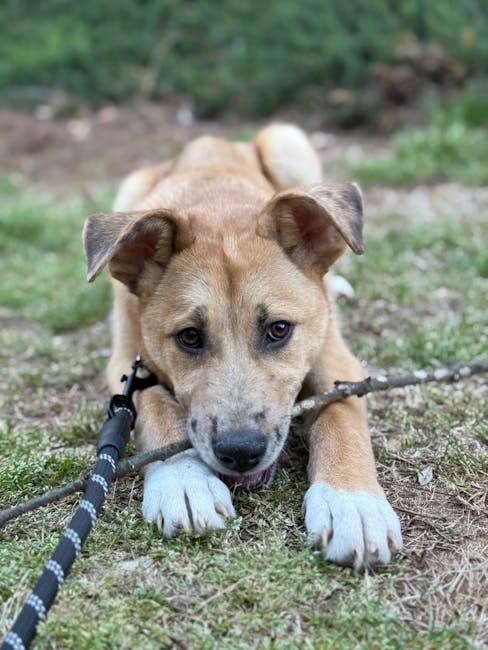
Common Mistakes to Avoid
Avoid inaccurate measurements, guessing sizes, and ignoring activity levels. Ensure proper fit by using size charts and considering fabric comfort to prevent discomfort or restricted movement for your dog.
Mistakes in Measuring and Sizing
Common errors include using incorrect tools, failing to measure regularly, and guessing sizes instead of consulting charts. Not accounting for fur thickness or body shape can lead to poor fit. Ignoring weight and activity level guidelines may result in discomfort or restricted movement. Ensure accurate measurements by using a flexible tape measure and comparing results to brand-specific charts. Avoid assuming sizes between brands, as variations exist. Proper sizing ensures comfort, mobility, and functionality, making precise measurements essential for optimal fit and your dog’s well-being.
Proper sizing ensures your dog’s comfort and functionality in clothing. Always measure accurately, use size charts, and consider your dog’s lifestyle for the best fit.
Final Tips for Dressing Your Dog
Dressing your dog can be a delightful experience when done correctly. Always prioritize comfort and mobility, ensuring clothes aren’t restrictive. Introduce garments gradually to help your dog adjust. Use positive reinforcement, like treats, to build confidence. Regularly check for proper fit to avoid discomfort or safety issues. Opt for breathable fabrics, especially for active dogs, to prevent overheating. Avoid over-accessorizing, as it may cause stress. Observe your dog’s behavior; if they show discomfort, reconsider the outfit. Lastly, ensure clothing matches their lifestyle, whether for casual walks, seasonal weather, or special occasions.
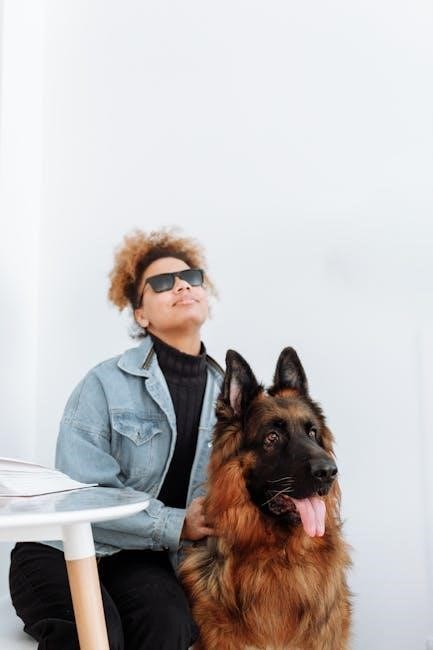
Additional Resources
For further guidance, explore reputable websites like Petco or Chewy for detailed size charts and styling tips. Breed-specific forums and the American Kennel Club also offer valuable insights and tools.
Recommended Websites and Tools
For accurate dog clothing sizing, visit Petco or Chewy for detailed size charts and measurement guides. Rover and The Spruce Pets offer breed-specific advice and styling tips. Use AKC for breed-specific size recommendations. Tools like SizeChart and MeasureMyPet provide interactive measurement guides. YouTube channels such as Pet Fashion offer video tutorials. Additionally, forums like Reddit’s r/DogClothes share user experiences and recommendations. These resources ensure you find the perfect fit for your dog, regardless of size or breed.